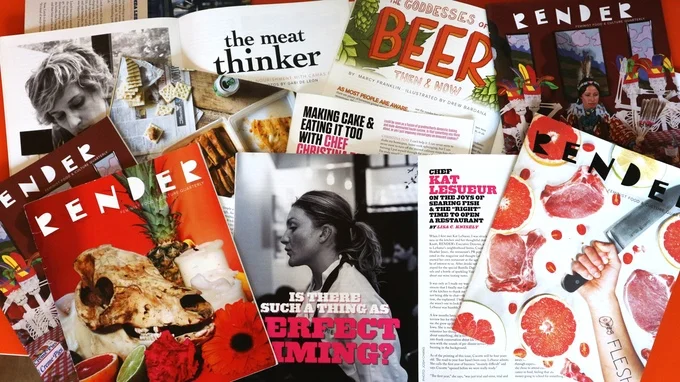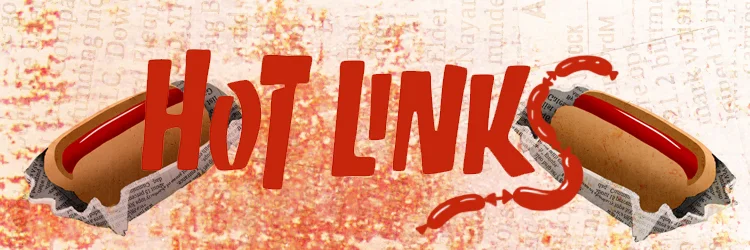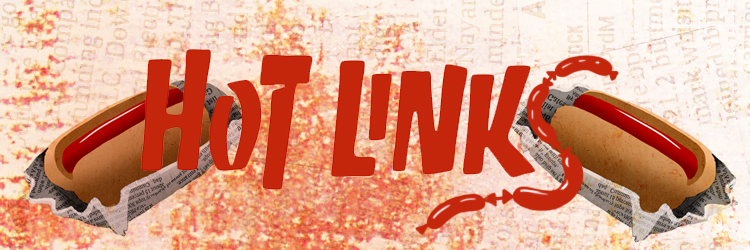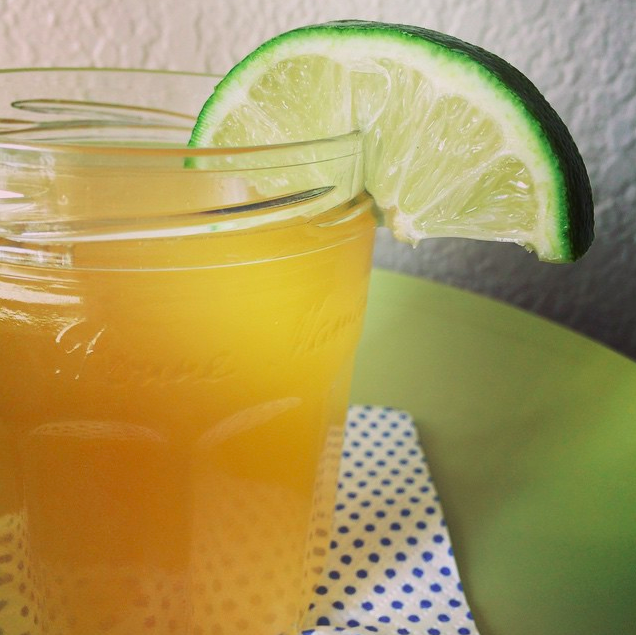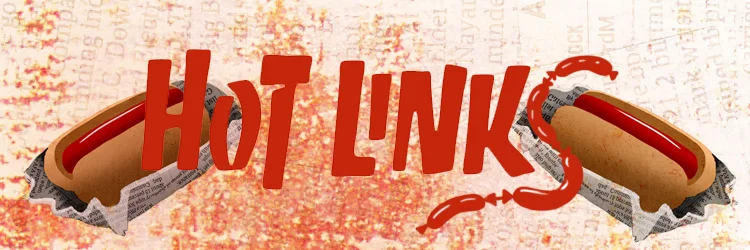Illustration by Cate Andrews.
Welcome to The Good Curd, where each month we’ll uncover and expound upon the myriad delights of cheese. Julia Ricciardi and Brett Bankson explore cultured cream in all its glory—creamy Brillat-Savarin, salty Pecorino, funky Maroilles, crumbly paneer, freshly made Burrata, or three years-aged Gouda. The forms and characteristics of cheese are as varied and intricate as the cuisines that utilize it and the folks who make it. (Did you know that women play a key role in cheese history in the U.S.A?) This series will explore women who make the stuff, as well as reviews, pairing suggestions, and tips for selecting the best cheese for any occasion.
Peg Smith and Sue Conley behind the counter at the Barn in Pt Reyes.
This week, I spoke with Nathan Mancini, cheesemonger at Cowgirl Creamery’s storefront in the San Francisco Ferry Building Marketplace. We talked about the origins of Cowgirl Creamery, their work establishing women in the food industry, and Nathan’s part in all of this.
BB: So up to this point I just know that I like Mt Tam and that Cowgirl was founded by Peggy [Smith] and Sue [Conley], right?
NM: Yeah I can give you some background on that. I’ve been with the company since 2008 off and on, and I learned a lot about what [Peggy and Sue] were trying to achieve, especially from the women cheesemongers who had worked with me. They knew more about Peggy and Sue’s desire to break through that old way of, you know, the male bias and territory in the kitchen. I think that the whole reason they each individually left the DC area to come out here was for the progressiveness and to be a part of the fresh, organic scene. Sue grew up around her grandfather who ran a diner in DC, so she was around that dining environment from an early age. She decided to move up to Point Reyes in West Marin, and met a local dairy farmer whose son had just converted their farm to organic dairy status. They needed help finding a way to market their milk. Back before Cowgirl was even in the picture, it started with Sue and Ellen Strauss trying to use Sue’s contacts back in this area to start selling that local, organic milk. About a year later, Sue’s mission grew into seeing where they could find a market up in West Marin where there wasn’t really a place to purchase the great local foods being produced there and showcase the appellation of the region. So essentially they bought, converted, and restored an old barn to be a marketplace with veggies, some artisan products, and cheeses being made by dairy farms that had figured that making a value-added product would be exceptional. So that got us going; we rounded out our cheese shop with other producers and fell into cheese-making a couple of years later.
BB: And when did Peggy come into the picture?
NM: During the early part of Tomales Bay Foods, which is what we called Cowgirl in this early stage, Peggy had come on board when Sue was trying to sell cheeses down at Chez Panisse, where Peggy was a chef and managed one of the kitchens. So Peggy was running a lot of things with a French orientation, and had been to France and formed relationships with cheesemakers there. They started out making fresh cheese, and that really helped us early on—selling the cheese that was ready to go and it could be used in kitchens as a versatile product.
BB: How did you get involved with Cowgirl?
NM: I used to concierge for the Watergate Hotel when I was finishing hospitality school, but had to switch jobs and started working at the Four Seasons in Georgetown and hated it. The main thing was that the Watergate was independently run by mostly European management, and it was way more relaxed and enjoyable. That aligned with how I saw myself and was the opposite at the Four Seasons—strict and conservative. I ended up finding Cowgirl just by chance when I was searching for a job back in Virginia. I had found a cheese shop there that I liked, and really wanted to find something similar back in DC. Before I knew it, I saw a Craigslist ad for a “Cowgirl Creamery” cheese shop. When I went to the interview, it smelled amazing the second I opened the door, like things I had never smelled and didn’t know existed. Breaking out of the hotel world, I didn’t see myself as a chef and couldn’t imagine cooking forever, but then I found myself having a different role in food. I learned a lot about our mission and other farms that we base our mission off of, and I was just so excited to be passionate about something and the people I was involved with. I’m trying to show that cheese is for everybody and that it’s not fancy food, it’s just costly food. I think that knowing the real cost of food is something that we’re not used to.
BB: This sort of renaissance of cheesemaking really interests me. It seems to me that the cheese industry here in the U.S. may be more accessible because you don’t have that huge, rich tradition of master cheesemakers like France or Italy, where it's is so male-dominated.
NM: I think there’s just such a big concern about doing a great job in cheese that people just want their peers and such to give a shit about what they’re doing. There is so much more than just basic, familiar cheese, and it really is bringing more people to the industry as consumers and partners. No one told me when I was going through school that cheesemaking or partnering with farms would be so critical in order to move forward. I fell into cheesemaking, and it’s been fun and challenging because there is so much care needed to ensure a product from farm to consumer that you really wouldn’t think about.
I was able to come into the company at a really interesting time, and was oblivious to some of the gender issues in the food service industry. I had worked in Roanoke in the hospitality industry, and the gender inequality was just something I had never been aware of. But historically, cheesemaking as a way to preserve milk was really women's specialty, and that just worked out to be the men managing the farming, husbandry aspects and women focusing more on milking animals, cheesemaking, etc. It’s interesting that the most recent cheesemaking scene came out of the 70’s and 80’s back-to-the-land movement, and that’s where Peggy and Sue got their footing in restaurants. Also the fact that this area, especially up north where there are such great dairies, attracted a lot of people from San Francisco who wanted to break out of the typical set-up in the food industry. A lot of the women that I worked with in DC knew of Peggy and Sue because of their interest in fighting for women’s representation in food and cheese, and it was something that I started to realize and see how they were looked up to as role models. We always see a man or a woman in the kitchen, but why don’t we just pay attention to the food instead—when you taste the food, does it matter who made it? It should be more about the animals and the ingredients and the soil and the process, and less about the person who is in the middle of that.
BB: What do you feel are any particular characteristics of the dairy and terroir that you and the other cheesemakers try to highlight?
NM: I always hope to learn more about the coastal climate where we source organic cow milk, like the fog, sunshine, diverse microclimates, and plant life that I’m trying to have more experience with. Our milk is tasty from these unique aspects of the land. Our cheesemakers really try to reflect this with our seasonal cheese lineup, so for spring we’re currently making St. Pat wrapped with nettles on the rind. Summer will bring a mix of flowers and herbs on the rind. Fall will have mushrooms, and winter will have sweet heirloom pepper flakes. These coatings are to highlight seasonal changes in our milk sourced from Sonoma county’s Chileno Valley Jersey Dairy that uses organic Jersey cow’s milk.
BB: What’s your favorite domestic cheese and favorite international cheese at this point in the season?
NM: Favorite domestic is the Sofia from Capriole Goat Cheese in Indiana. It’s an ash-ripened goat cheese. International would be our Pecorino Foglie di Noce that’s wrapped in walnut leaf.
BB: What style of cheese would you produce if you had unlimited resources?
NM: If I had unlimited resources, I would produce a blue cheese reminiscent of France’s Bleu d’Auvergne or Ireland’s Cashel Blue—something creamy, salty, grassy, nutty.
BB: Are there any local or regional cheesemakers/mongers that you really admire?
NM: There are a handful of folks I could highlight at the moment. For a maker, I commend the team at Bleating Heart up in Tomales, as they are back in production after their recent recall. It's wonderful that they are determined to keep moving forward considering the setback. As for a monger, I really respect my new friend Thalassa Skinner, cofounder of Culture magazine. I have read Culture since its first year in 2008, when I was working my first year in cheese at Cowgirl Creamery's DC store. I love that she is still such an active member of the industry and has set so many mongers in action with her experience and insight into the industry. I'm lucky to call her a colleague and mentor.



